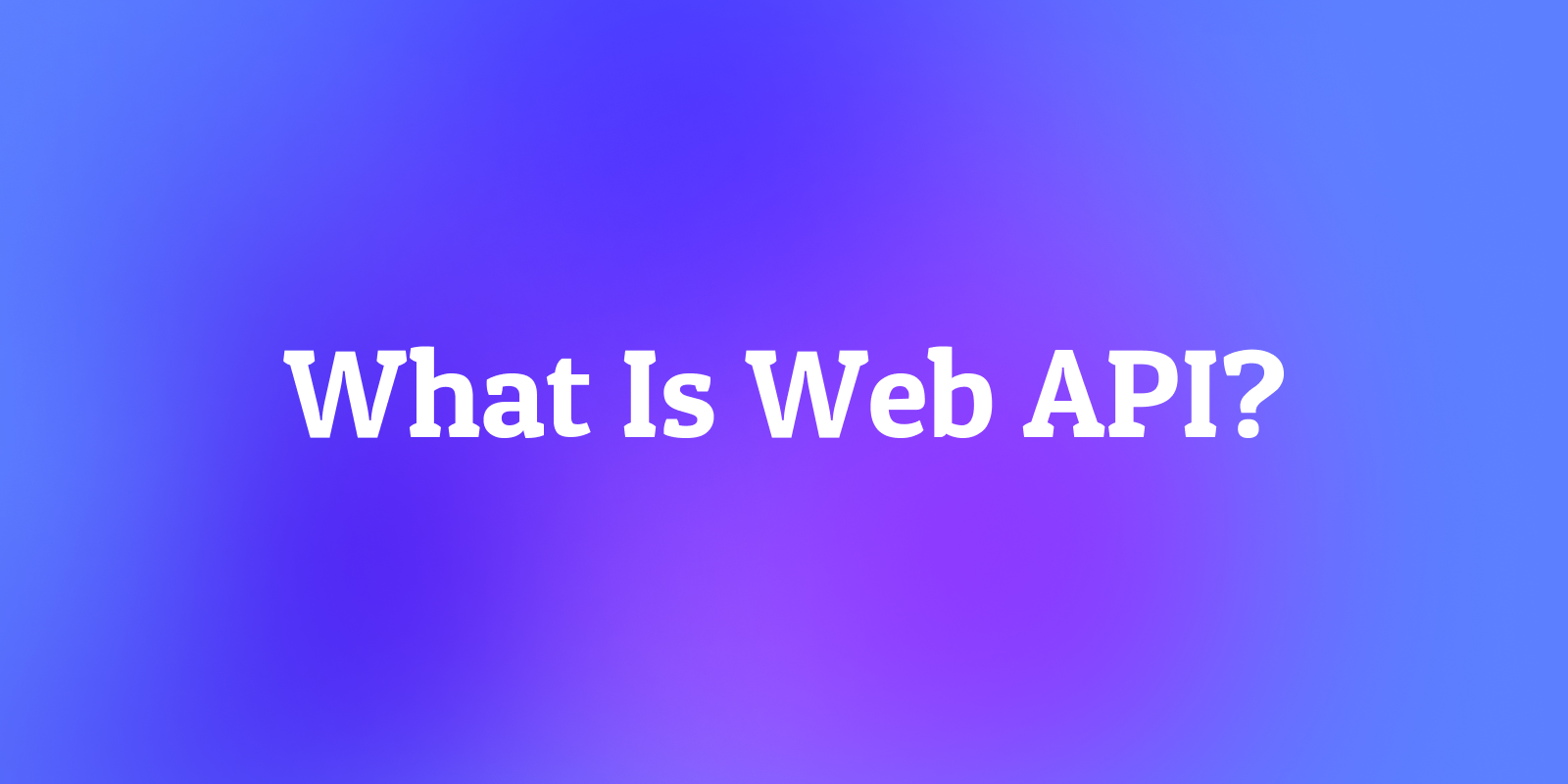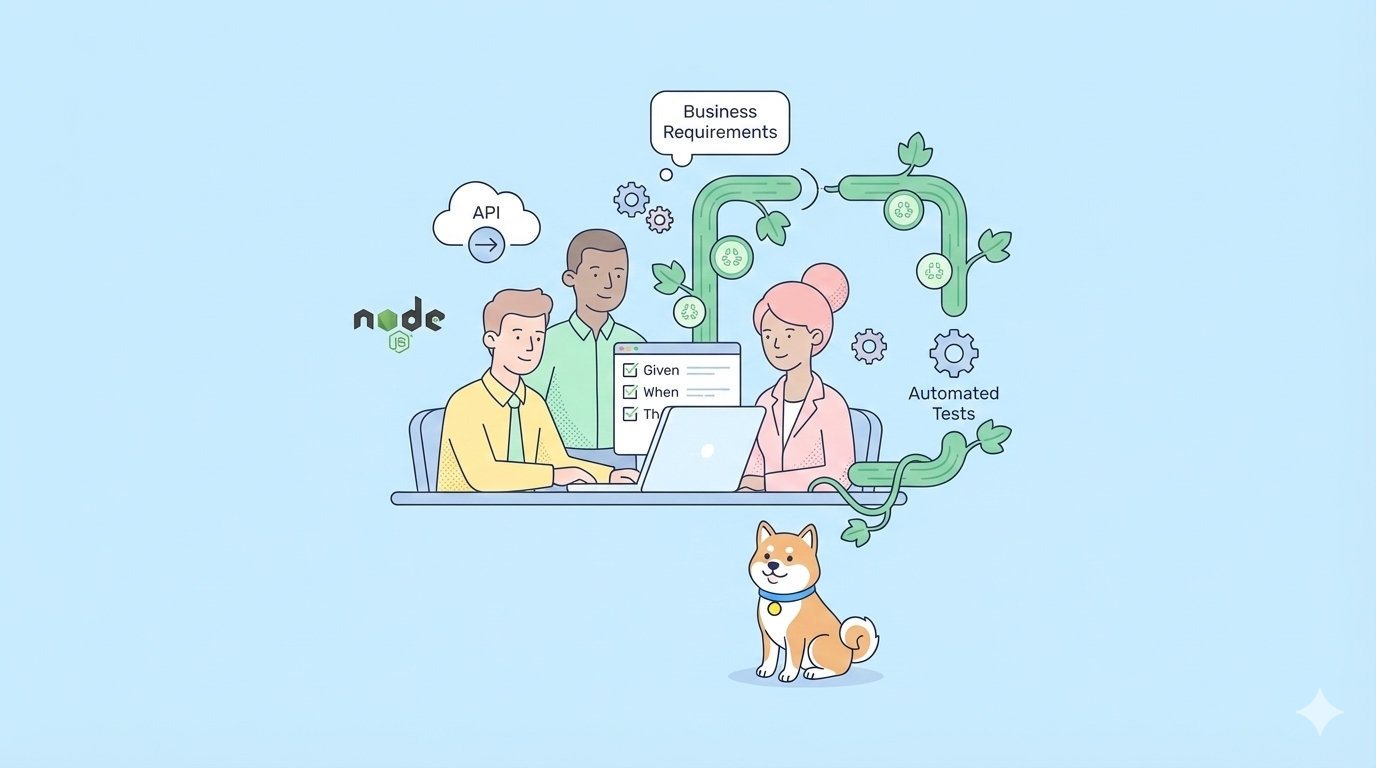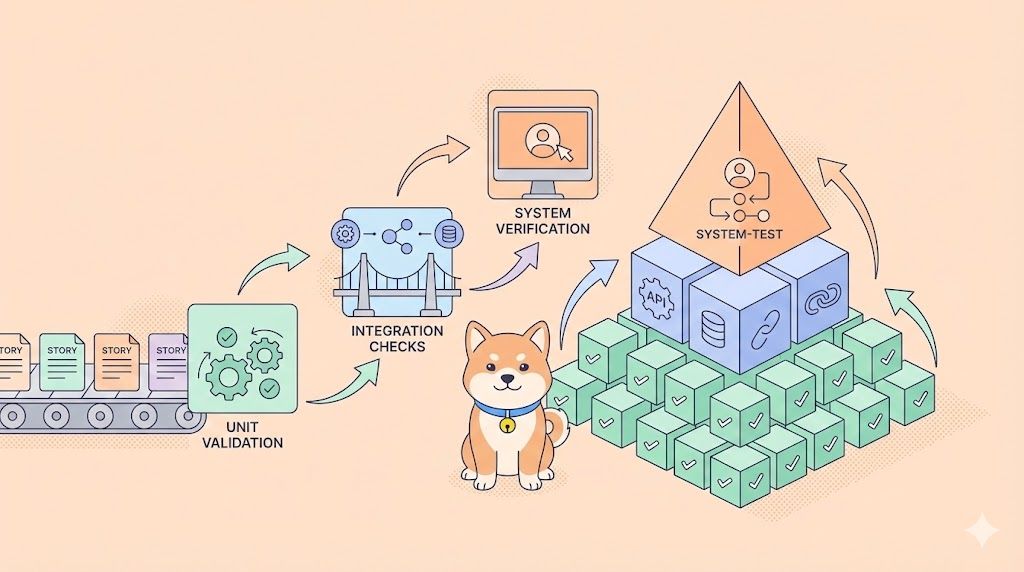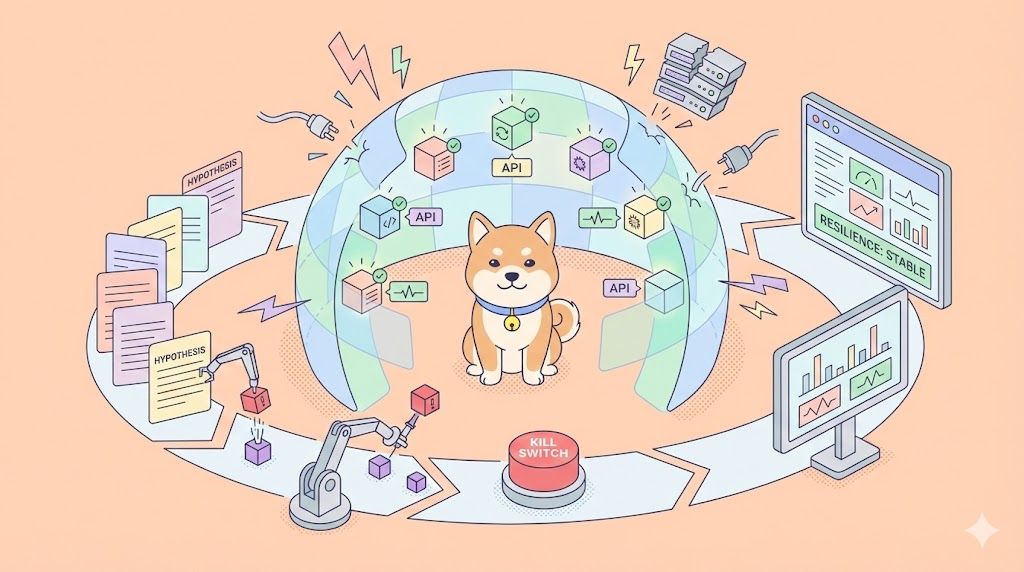You're using a weather app on your phone. You open it, and instantly, you see the forecast for your exact location. But wait, your phone isn't a miniature weather station. It doesn't have satellites and Doppler radar inside it.
So, how does it know?
You book a flight on a travel website. In one search, you see options from dozens of different airlines. The website doesn't have direct access to every airline's internal booking system.
So, how does it work?
The answer, powering these interactions and millions more every second, is something called a Web API.
It's the unsung hero, the invisible glue, the secret handshake that allows all our digital tools to talk to each other. If you've ever wondered how the modern web actually functions, understanding Web APIs is the key. But what exactly is a Web API? How does it work? And why has it become such a critical part of modern web and mobile applications?
Before we dive into the technical details, if you're a developer, tester, or product manager who wants to not just understand APIs but actually work with them, you need a tool that makes it simple. Download Apidog; it's an all-in-one API platform that lets you design, mock, test, debug and document APIs, turning the concepts in this article from theory into practice. A powerful free API testing and management tool can help you build, test, and maintain your Web APIs efficiently.
Now, let's pull back the curtain and demystify the technology that makes our connected world possible.
Introduction to Web APIs
The internet as we know it today wouldn't exist without APIs. Every time you log in with Google, fetch data from a weather app, or stream a song on Spotify, an API is working behind the scenes.
Specifically, Web APIs are the backbone of this interconnected world. They allow apps, websites, and services to communicate with each other over the internet.
What Does "API" Stand For?
First things first, API means Application Programming Interface. Think of it as a bridge or messenger that allows two software applications to communicate with each other. Let's break that down:
- Application: This can be any piece of software with a distinct function. It could be a web server, a database, an operating system, or even a tiny microservice.
- Programming: An API is a way for programmers to interact with that application using code, not a graphical user interface (GUI).
- Interface: It's a contract. It's a well-defined boundary that specifies how two systems can communicate. It says, "If you give me X, I will give you back Y."
So, What Is a Web API?
A Web API is specifically an API that you access over the Internet using HTTP/HTTPS protocols, the same protocol that powers the web to communicate over a network like the Internet. When people say "API" today, they are almost always referring to a Web API.
Put simply, a Web API is a way for different software programs, whether they’re on your phone, computer, or servers, to interact and share data or services via the web.
For example, when your weather app updates the forecast, it's often calling a Web API owned by a weather service to fetch the latest data.
How Do Web APIs Actually Work? The Request-Response Cycle
The communication between the client and the server via a Web API follows a very consistent pattern called the Request-Response Cycle. It's a four-step dance.
- The Client Makes a Request: The client (e.g., your phone's weather app) decides it needs data. It prepares an HTTP Request message. This message is crucial and has several parts:
- URL (Endpoint): The specific address of the "thing" you want. For example,
https://api.weatherservice.com/forecast. - HTTP Method: A verb that tells the server what type of action you want to perform. The most common are:
1)GET: "Retrieve" or read data. (e.g., Get the forecast).
2)POST: "Create" new data. (e.g., Create a new user account).
3)PUT/PATCH: "Update" existing data. (e.g., Update your profile name).
4)DELETE: "Delete" data. (e.g., Delete a post).
- Headers: Additional metadata about the request. This can include:
1)Authorization: An API key or token to prove you have permission to make the request.
2)Content-Type: What format the data you're sending is in (usually application/json).
3)Body (Optional): The actual data you want to send to the server, used with POST, PUT, and PATCH requests. For example, the details of the new user you want to create, formatted in JSON.
2. The Request is Sent Over the Internet: This request packet is sent across the vast network of the Internet to the server located at the URL's address.
3. The Server Processes the Request: The server receives the request. It examines the URL, the HTTP method, and the headers. It figures out what the client is asking for. It might run some code, query a database, or call other services. It then prepares an HTTP Response.
4. The Server Sends a Response Back: The response also has key parts:
- HTTP Status Code: A 3-digit code that quickly tells the client if the request was successful or not.
200 OKmeans success!404 Not Foundmeans the resource doesn't exist.500 Internal Server Errormeans the server messed up. - Headers: Metadata about the response.
- Body: The main payload is the data the client asked for, usually in JSON format. For our weather app, this would be the temperature, humidity, and forecast data.
This entire cycle happens in milliseconds, hundreds of times just to load a single modern webpage.
The Different Flavors of Web APIs
Not all Web APIs are built the same. Over time, different architectural styles have emerged. The main ones you'll encounter are:
1. REST APIs (The Most Popular)
REST (Representational State Transfer) is more of a set of design principles than a strict protocol. It's the most common style you'll interact with. RESTful APIs are known for:
- Using standard HTTP methods (
GET,POST,PUT,DELETE). - Being stateless (each request contains all the information needed to process it).
- Organizing data into resources, which are accessed via URLs (e.g.,
/users,/users/123/posts). - Typically returning data in JSON format.
If you work with APIs, you'll spend most of your time with REST APIs.
2. SOAP APIs (The Enterprise Veteran)
SOAP (Simple Object Access Protocol) is a formal protocol that uses XML. It's known for being highly secure, standardized, and built-in error handling, but it's also much more complex and heavier than REST. It's often found in large financial and enterprise systems.
3. GraphQL APIs (The Modern Precision Tool)
GraphQL is a query language for APIs developed by Facebook. It solves a common REST API problem: over-fetching and under-fetching data. With a REST API, if you need data from multiple endpoints, you might have to make multiple requests. With GraphQL, the client can send a single, precise query asking for exactly the data it needs, and nothing more.
Why Are Web APIs So Popular Today?
The rise of Web APIs has fundamentally changed how software is built.
- They Enable Integration (The "Mashup" Effect): APIs allow completely different applications to seamlessly share data and functionality. This is how you can sign into a website using your Google account (Google OAuth API), see a Google Map on a restaurant's page (Google Maps API), or pay with PayPal on a shopping site (PayPal API).
- They Power Mobile Apps and Single-Page Applications (SPAs): Your mobile phone app doesn't have all its data stored on it. Every time you refresh your feed, it's making API calls to a server to
GETthe latest data. Modern web apps (like Gmail or Facebook) work the same way, fetching data dynamically via APIs without reloading the entire page. - They Enable Microservices Architecture: Instead of building one giant, monolithic application, companies break their software down into dozens of small, independent services (a "User Service," a "Payment Service," an "Email Service"). These services talk to each other exclusively through Web APIs, making the overall system more flexible and scalable.
- They Create Ecosystems and Business Models: Companies like Stripe, Twilio, and AWS have built massive businesses by providing powerful services exclusively through APIs. They don't have a main app for consumers; their product is the API.
In short: Web APIs enable collaboration, innovation, and speed.
How to Explore and Use Web APIs
You don't need to be a senior developer to play with APIs. Here's how you can get started:
- Find a Public API: Many services offer free public APIs for learning. Some great examples are the JSONPlaceholder (a fake API for testing) or OpenWeatherMap.
- Use an API Tool like Apidog: This is where the theory becomes real. Instead of writing code immediately, you can use a dedicated API client.
- Enter the API Endpoint URL.
- Select the HTTP Method (e.g.,
GET). - Add any required Headers (like an API key).
- Click "Send".
- See the Response status code, headers, and body instantly.
Apidog provides a visual, intuitive interface to craft requests, test endpoints, and understand the responses without the initial complexity of writing code. It's the perfect companion for learning and working with APIs professionally.
How Do Developers Build Web APIs?
Web APIs can be built using many programming languages and web frameworks, including:
- Node.js / Express.js
- Python / Django or Flask
- Java / Spring Boot
- .NET Core / ASP.NET Web API
Regardless of the stack, good Web APIs follow standard best practices: consistent endpoint design, clear documentation, versioning, and robust security.
Web APIs in Everyday Life – Real Examples
You probably already use a dozen Web APIs today without noticing:
- Social Media Feeds: Apps display Twitter, Instagram, or Facebook content via their APIs.
- Payment Gateways: Websites perform secure transactions using API services like Stripe or PayPal.
- Geolocation Services: Apps get your position using APIs like Google Maps.
- Weather Updates: Weather apps pull forecasts from meteorological Web APIs.
- Messaging: Slack or WhatsApp integrations use APIs to send and receive messages programmatically.
Benefits of Using Web APIs
Some clear advantages:
- Scalability: Apps can easily grow by plugging into more APIs.
- Efficiency: Saves time by reusing existing services.
- Interoperability: Connects different platforms.
- Security: With proper authentication (OAuth, API keys).
- Faster development: Developers don’t need to rebuild core services.
Web APIs in Mobile Apps
Web APIs are especially important for mobile development. Why? Because most mobile apps don’t store all their data locally they rely on APIs to fetch user info, content, or settings.
For example:
- A ride-sharing app uses APIs for maps, payments, and push notifications.
- A food delivery app calls restaurant APIs, payment APIs, and logistics APIs.
Without APIs, most mobile apps would just be static shells.
How Apidog Helps You Manage Web APIs
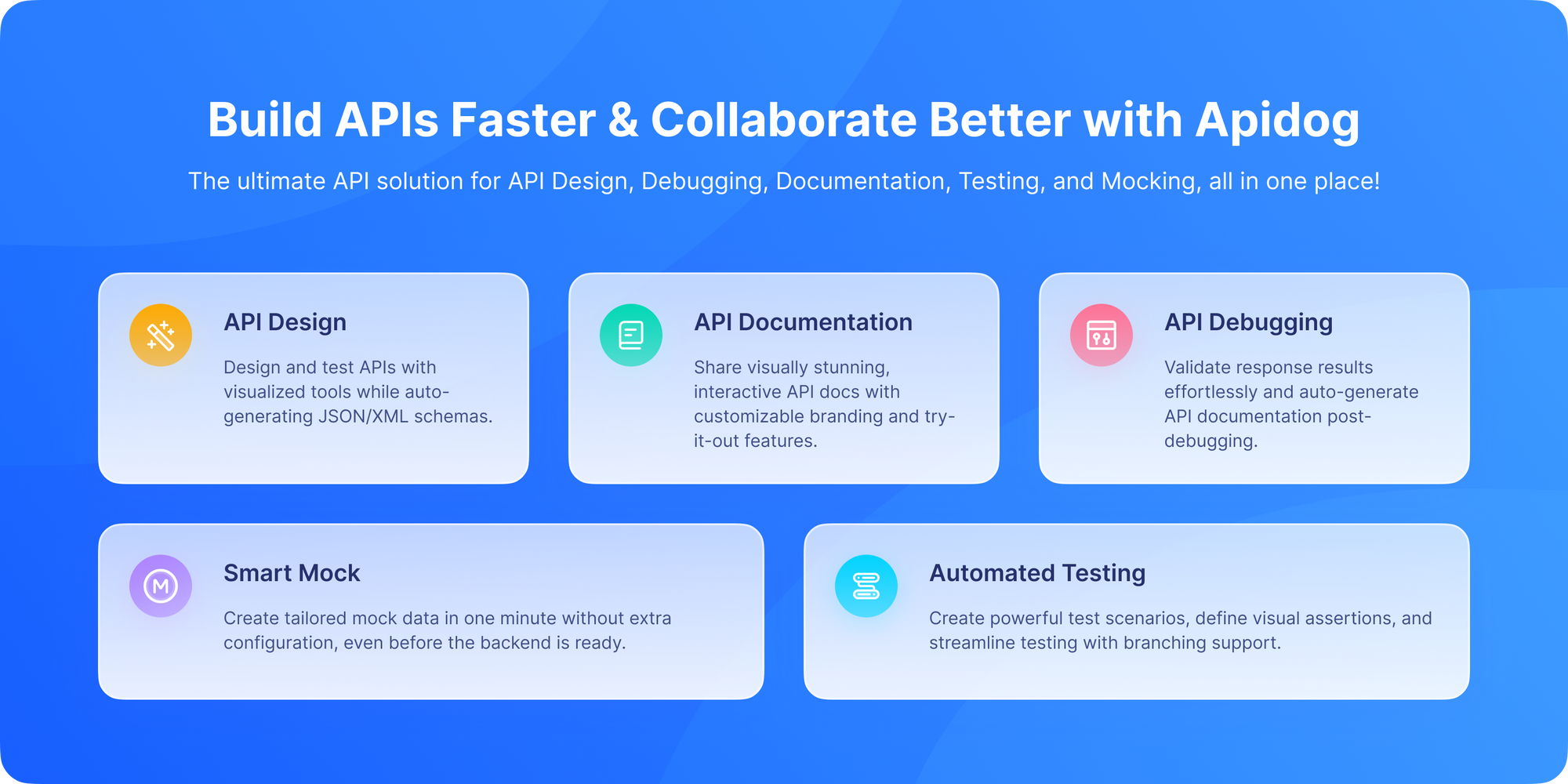
Building a Web API is only the first step. To make it reliable and easy for others to use, developers also need to document, test, and manage it — a process that can quickly become complex.
This is where Apidog comes into play. Apidog is a free-to-start, powerful API testing and documentation tool that helps teams:
- Write clear, concise API documentation that developers love.
- Test API endpoints thoroughly, including edge cases and failures.
- Automate API testing to quickly catch regressions.
- Collaboration Tools: Developers, testers, and business teams all work together.
- Mock Servers to test APIs before the backend is ready.
Using Apidog empowers teams to deliver reliable, consistent Web APIs that users and developers trust. In short, Apidog makes Web API management simple and efficient.
API Security in the Web API World
Security is critical. Some must-have measures include:
- API keys: Identify the client.
- OAuth 2.0: Secure authorization.
- Rate limiting: Prevent abuse.
- Data encryption (HTTPS): Protects sensitive information.
Challenges and Pitfalls of Web APIs
Of course, Web APIs aren’t perfect. Challenges include:
- Security risks if not implemented properly.
- Rate limits imposed by API providers.
- Versioning headaches when APIs change.
- Downtime issues if an external API fails.
This is why API testing tools like Apidog are crucial they help catch issues before they hit production.
Best Practices for API Design
If you're on the other side creating a Web API for others to use following good practices is crucial for adoption.
- Use Clear and Logical Endpoints: Use nouns, not verbs, for resources (e.g.,
/users, not/getUsers). - Use HTTP Methods Correctly: Use
GETfor retrieving,POSTfor creating, etc. - Provide Excellent Documentation: Your API is only as good as its docs. Tools like Apidog can auto-generate beautiful, interactive documentation.
- Version Your API: Use versioning (e.g.,
/api/v1/users) so you can improve your API without breaking existing applications. - Implement Authentication: Use API keys, OAuth, or tokens to control access and protect your data.
Conclusion: The Fabric of the Digital World
So, what is a Web API? At its core, it’s a way for applications to talk to each other over the internet. Web APIs are more than just a technical concept; they are the fundamental building blocks of our modern digital experience. Every time you check the weather, book a ride, scroll through social media, or even read this blog, you're relying on a complex, silent symphony of APIs working together. From payments to maps to music streaming, APIs power the digital experiences we rely on daily.
- APIs are everywhere.
- They make apps more powerful.
- They’re essential for modern development.
They represent a shift towards openness, integration, and specialization. By providing a standardized way for systems to communicate, they have unlocked unprecedented innovation and collaboration. Whether you're a developer, a product manager, or just a curious tech user, understanding this "invisible handshake" is key to understanding how the world works today.
And if you want to work with them without headaches, don’t forget: Apidog is your go-to solution. Whether you’re building, testing, or documenting Web APIs, you can download Apidog for free today and simplify the entire process.
